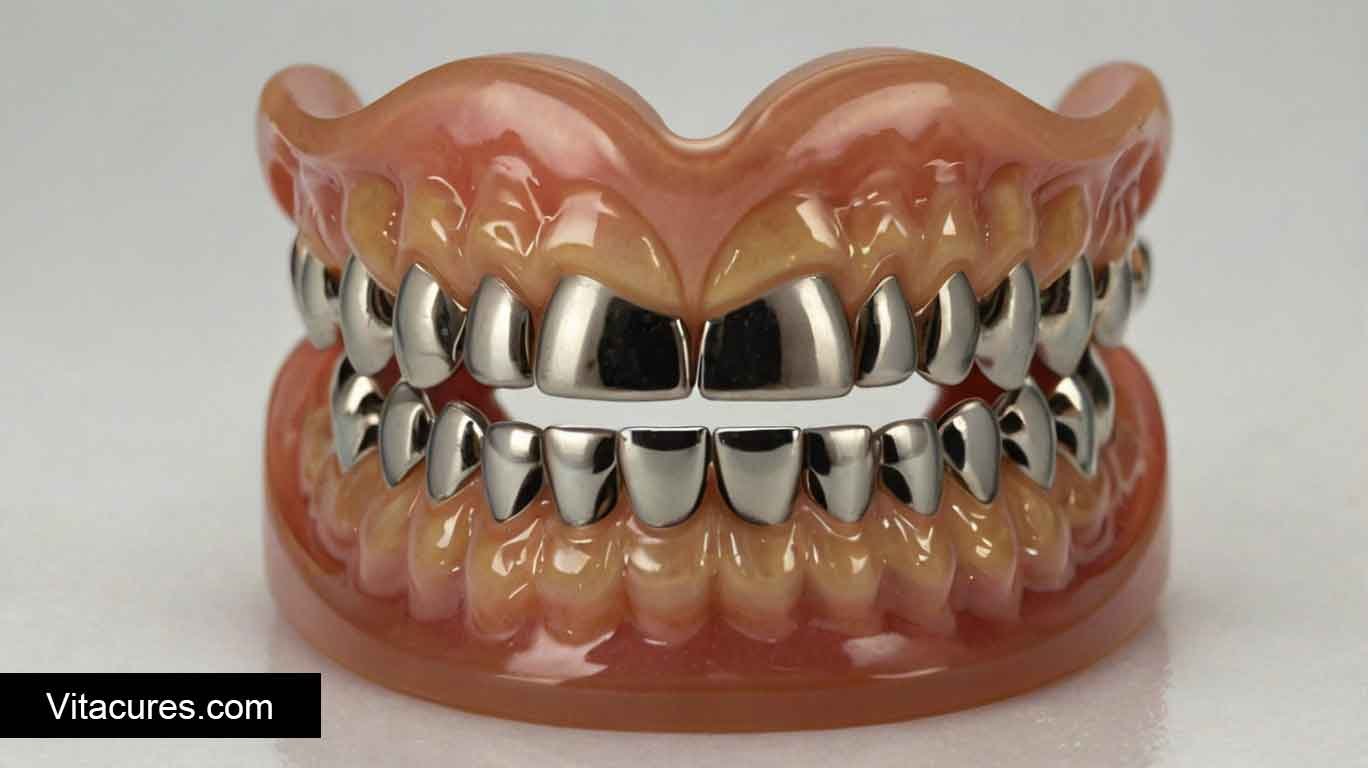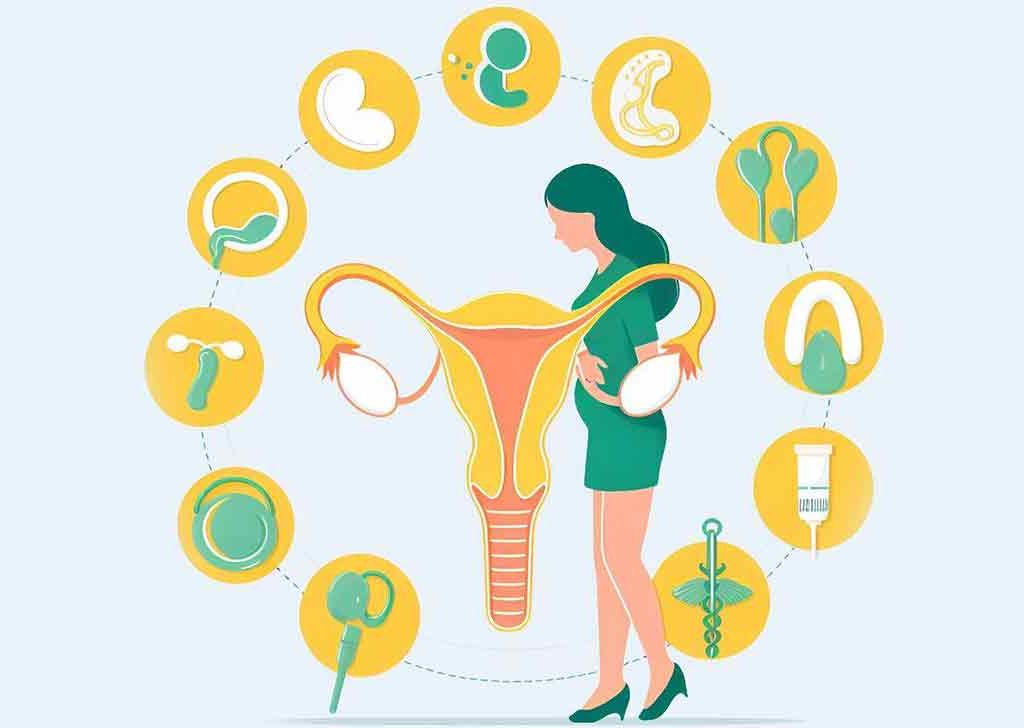Permanent Retainer: Have you ever wondered how to keep your teeth perfectly aligned after braces? If so, you’re not alone.
Many people share your concern, and that’s where a permanent retainer comes into play. This small, often unnoticed device can be your best friend in maintaining that confident smile. But what exactly is a permanent retainer, and why might you consider one?
We’ll uncover everything you need to know about permanent retainers. From understanding what they are and why they might be a good fit for you, to the pros and cons of choosing a permanent solution over a removable one, we’ve got you covered. You’ll discover how to maintain these devices and navigate their costs, helping you make an informed decision about your dental health. So, if you’re ready to dive into the world of permanent retainers and learn how they can impact your smile, keep reading. Your perfect smile awaits!

Understanding Permanent Retainers
Permanent retainers are dental devices used after braces to keep teeth in place. They are bonded to the back of teeth, offering a discreet way to maintain alignment. Ideal for those who want long-term results without removable retainers.
Permanent retainers are a common dental device. They help maintain the alignment of teeth after orthodontic treatment. Many people choose them for their convenience and effectiveness. Understanding how these retainers work can be crucial for anyone considering this option. Let’s dive into the details.
What is a Permanent Retainer? Permanent retainers are thin wires. They are bonded to the back of your teeth. They keep your teeth in place after braces. Benefits of Permanent Retainers Permanent retainers offer several advantages. Here’s a closer look at these benefits: – Continuous support: They provide constant pressure to keep teeth aligned.
– Invisible design: Positioned behind the teeth, they are hard to see. – Low maintenance: Less daily upkeep compared to removable retainers. How Permanent Retainers Work These retainers use a simple mechanism. They apply gentle pressure to teeth. This pressure maintains alignment without daily adjustments.
Types of Permanent Retainers Permanent retainers come in various forms. Here’s a breakdown of the common types: – Fixed wire retainers: These are bonded with dental cement. – Bonded lingual retainers: They are placed on lower front teeth. – Custom retainers: Made to fit the unique shape of your mouth.
Care and Maintenance Proper care ensures longevity. Here are some tips for maintaining your permanent retainer: – Regular cleaning: Brush around the retainer to prevent plaque. – Routine check-ups: Visit your dentist to ensure proper placement. – Avoid hard foods: Steer clear of foods that can damage the retainer.
Potential Drawbacks While effective, these retainers have downsides. Consider these points before deciding: – Difficulty in cleaning: Some areas are hard to reach. – Potential discomfort: Some may feel irritation initially. – Risk of damage: Hard foods or accidents can damage the wire.
Who Can Benefit from Permanent Retainers? Permanent retainers suit many individuals. Those with a history of teeth shifting find them helpful. Teenagers and adults often benefit from their consistent support. Cost Considerations Costs can vary for these retainers. Factors affecting price include type, material, and location.
It’s important to discuss options with your orthodontist. Comparison with Removable Retainers Permanent and removable retainers differ. Here’s how they compare: – Usage: Permanent ones stay fixed; removable ones are taken out. – Visibility: Permanent retainers are less noticeable. – Maintenance: Removable retainers require more care and cleaning.
Common Misconceptions Several myths surround permanent retainers. Let’s clear up some common misconceptions: – They are uncomfortable: Most people adapt quickly. – They cause speech issues: Speech problems are rare. – They are only for young people: Adults use them too.
FAQs About Permanent Retainers Here are answers to some frequently asked questions about permanent retainers: – Can they be removed? Yes, a dentist can remove them if needed. – Are they suitable for everyone? Most people can use them, but consult a dentist.
– Do they last forever? They are durable but may need replacement over time.
Reasons For Permanent Retainers
Permanent retainers help keep teeth straight after braces. They prevent teeth from shifting back. These retainers are fixed, so they work continuously without needing daily removal. Perfect for maintaining a long-lasting smile.
Imagine a world where your teeth stay aligned without a fuss. That’s the magic of permanent retainers. These little wonders, bonded to your teeth, ensure your smile remains flawless. Let’s dive into why these retainers are a top choice for many.
Long-Term Stability Permanent retainers offer unmatched stability. They are fixed, which means they constantly hold teeth in place. This reduces the risk of teeth shifting over time. Unlike removable options, there’s no need to remember to wear them. They provide peace of mind, knowing your teeth stay put.
Convenience Here’s why many people love permanent retainers: – No daily adjustments: You don’t need to put them in or take them out. – Less maintenance: They require minimal care compared to other options. – No risk of loss: They’re fixed, so you can’t misplace them.
Aesthetic Benefits Permanent retainers also offer aesthetic advantages. Since they are placed behind teeth, they’re invisible. This means you can smile confidently without anyone knowing about the retainer. They keep your teeth straight without altering your appearance. Cost-Effective Let’s talk about savings with permanent retainers: – Long-lasting: They don’t need frequent replacements.
– Minimal repairs: With proper care, they rarely break. – No extra expenses: No need for special cleaning products. Reduced Risk of Non-Compliance Permanent retainers ensure consistent wear. There’s no need for self-discipline to remember wearing them. They eliminate the risk of forgetting or losing them.
This ensures your teeth remain in perfect alignment without extra effort.
What Are They?
Permanent retainers are thin metal wires fixed behind your teeth, ensuring alignment after braces. They are not removable and help maintain straight teeth over time. Regular dental check-ups are essential to monitor and clean around them effectively.
A permanent retainer can be a mystery to many. Often, it’s a solution offered after orthodontic treatment. But what exactly does it entail? Let’s dive into understanding this dental marvel and its purpose. Definition of Permanent Retainers A permanent retainer is a fixed dental appliance.
It consists of a metal wire. This wire is bonded to the back of your teeth. It helps keep your teeth in place after braces. Unlike removable retainers, it stays in your mouth. Purpose of Permanent Retainers Permanent retainers serve specific goals.
Here are some key purposes: – Prevent teeth shifting: Keeps your teeth from moving back to their old positions. – Maintain alignment: Ensures your teeth remain straight and properly aligned. – Provide long-term stability: Offers a lasting solution without the need for removal.
Materials Used in Permanent Retainers The materials in permanent retainers vary. They are designed for durability and comfort. – Stainless steel: Commonly used due to its strength and flexibility. – Composite resin: Bonds the wire to the teeth, providing a secure hold.
– Metal alloy: Sometimes used for enhanced durability. How Permanent Retainers Are Installed The installation process involves several careful steps: – Teeth cleaning: Ensures a clean surface for bonding. – Wire measurement: Tailors the wire length to fit your teeth.
– Bonding procedure: Uses resin to attach the wire to your teeth. Benefits of Permanent Retainers Many people find these retainers beneficial for several reasons: – Low maintenance: No need to remember to wear or remove them. – Invisible: Hidden behind the teeth, they are not noticeable.
– Long-lasting: Can last for several years with proper care. Considerations for Permanent Retainers Before getting a permanent retainer, consider the following: – Oral hygiene: Proper cleaning is essential to prevent plaque buildup. – Regular check-ups: Necessary to ensure the retainer stays in good condition.
– Potential discomfort: Some may experience slight irritation initially. Understanding these aspects can help you make informed decisions. Permanent retainers offer a simple yet effective way to maintain your perfect smile.
Why Get One?
A permanent retainer helps keep your teeth straight after braces. It prevents them from shifting back. This offers long-term stability for a confident smile.
Considering a permanent retainer might seem overwhelming at first. Yet, it offers many benefits for those seeking long-term dental care solutions. It’s a popular choice among individuals who want to keep their teeth aligned without the hassle of removable devices.
Let’s explore why choosing a permanent retainer can be a smart decision for your dental health. Long-Term Teeth Alignment Permanent retainers offer consistent support for your teeth. They ensure that your teeth remain in place after braces have been removed.
– Continuous alignment: Permanent retainers work around the clock to keep teeth in position. – No forgetting to wear them: Unlike removable retainers, they don’t rely on your memory. – Less risk of teeth shifting: Keeps your smile steady and aligned over time.
Low Maintenance These retainers require minimal upkeep compared to their removable counterparts. They seamlessly fit into your lifestyle without demanding extra attention. – Easy cleaning: They can be cleaned during regular brushing. – No need for storage: Unlike removable retainers, there’s no need to store or carry them.
– Durable design: Made to withstand daily wear, reducing the need for replacements. Cost-Effective Solution Permanent retainers can be a budget-friendly choice. Over time, they may prove more economical than other options. – One-time installation: Avoids repeated purchases of removable retainers.
– Reduced replacement costs: Less frequent need for replacements due to wear. – Long-lasting materials: Built to endure years of use without frequent repairs. Enhanced Comfort For many, permanent retainers are more comfortable than removable ones. Their fixed nature eliminates the discomfort associated with inserting and removing devices.
– Seamless fit: They remain in place, avoiding irritation from frequent handling. – No adjustment periods: Unlike removable retainers, they don’t require getting used to. – Discreet appearance: Less noticeable, offering more confidence in social situations.
Pros And Cons
Permanent retainers help keep teeth straight after braces. They are fixed and cannot be removed by the patient. Some find cleaning difficult, but others appreciate the hassle-free support.
Permanent retainers can be an essential part of maintaining a straight smile. They are fixed devices that help keep teeth aligned after orthodontic treatment. While they offer many benefits, they also come with certain drawbacks. It’s crucial to weigh these factors before deciding if a permanent retainer is right for you.
Pros of Permanent Retainers Permanent retainers have several advantages that make them a popular choice. Let’s explore some of these benefits: – Constant support: Keeps teeth in place 24/7 without needing to remember. – Invisibility: Hidden behind teeth, so they aren’t noticeable when you smile.
– No removals: No need to take them out for eating or cleaning. – Durability: Made from strong materials that last for years. – Reduced movement: Minimizes teeth shifting over time. Cons of Permanent Retainers Despite the benefits, permanent retainers have some downsides.
It’s important to consider these before making a decision: Permanent retainers can be challenging to clean. Food particles can get trapped around them, leading to plaque buildup. This can result in gum disease if not managed properly. They may also require more frequent dental visits for adjustments.
Furthermore, some people might find them uncomfortable, especially at first. Lastly, they can break or become loose, requiring repairs.
Maintenance
Caring for a permanent retainer involves simple daily habits. Brush and floss around the retainer carefully to prevent plaque buildup. Regular dental check-ups ensure the retainer stays secure and effective.
Caring for a permanent retainer is key to keeping your smile healthy. These small devices need regular upkeep. Let’s dive into how you can maintain them easily and effectively. Daily Cleaning Daily cleaning ensures your retainer stays in great condition.
Here are some tips: – Brush gently: Use a soft-bristle toothbrush to avoid damage. – Floss carefully: Flossing prevents plaque buildup around the retainer. – Rinse thoroughly: Rinse with water to remove food particles. Regular Check-Ups Visiting your dentist is crucial for retainer upkeep.
They can spot issues early on. Regular appointments help ensure everything is in order and working as it should. Avoid Hard Foods Some foods can harm your retainer. Be mindful of what you eat: – No hard candies: They can break the retainer.
– Limit crunchy snacks: Chips and nuts might cause damage. – Steer clear of ice: Chewing ice can crack the retainer. Watch for Wear and Tear Monitor your retainer for any signs of damage. If you notice anything unusual, consult your dentist promptly.
Early detection can prevent bigger problems. Use a Mouthguard for Sports Playing sports can be rough on your retainer. Protect it with a mouthguard. This simple step keeps it safe during physical activities.
Vs. Removable Retainers
Permanent retainers offer a hassle-free solution for maintaining teeth alignment. Unlike removable retainers, they stay fixed behind the teeth. This ensures consistent support without the need for daily insertion and removal.
Choosing the right retainer is crucial for maintaining a straight smile. Permanent and removable retainers each offer unique benefits. Understanding these can help you make an informed decision. Let’s explore how these two types of retainers compare. Definition and Functionality A permanent retainer consists of a fixed wire.
It’s attached to the back of the teeth. This type of retainer stays in place and works continuously. It ensures teeth stay aligned without daily intervention. On the other hand, removable retainers are taken out as needed. They are worn mostly at night.
This option requires regular cleaning and careful handling. Convenience and Ease of Use Many people find permanent retainers convenient. They don’t have to remember to put them in. – No daily removal: Permanent retainers stay in place. – Less risk of losing them: Since they’re fixed, they can’t be misplaced.
Removable retainers offer flexibility. They can be taken out for eating and cleaning. – Adjustable wear: Take them out for meals or special occasions. – Easy to clean: Remove them for thorough cleaning. Maintenance and Hygiene Permanent retainers need attention to maintain oral health.
Regular flossing is essential. Special tools may be needed for cleaning. Removable retainers offer simpler hygiene. You can clean them separately from your teeth. This makes it easier to maintain them. Cost and Longevity Permanent retainers are often a one-time cost.
They last for many years without needing replacement. – Long-lasting: Often stay in place for a decade or more. – One-time investment: No need for frequent replacements. Removable retainers might require replacement over time. They can wear out or become damaged.
– Periodic replacements: Need replacing every few years. – Initial and ongoing costs: May require more frequent expenses. Choosing between these retainers depends on lifestyle and preferences. Understanding each option’s benefits can guide your decision.
Cost
Permanent retainers offer a lasting solution for maintaining straight teeth, but their cost varies. Factors like material and dental expertise influence the price. Comparing options can help you find an affordable choice.
Getting a permanent retainer can be a smart choice for keeping your teeth straight after braces. But, it’s important to know how much it costs. This section will help you understand the price. Average of Permanent Retainers Many people wonder about the average price.
Here’s a breakdown to help you: – Initial cost: Typically ranges from $150 to $500 per arch. – Additional fees: May include X-rays and office visits. – Replacement cost: Can be similar to the initial cost if damaged. Factors Affecting Cost Several things can change the total cost.
Let’s explore these factors: – Material type: Stainless steel is often cheaper than titanium. – Location: Prices vary by region and dental office. – Professional expertise: Experienced orthodontists may charge more. Insurance Coverage Insurance can help reduce expenses. Here’s what you should know: – Coverage varies: Some plans include orthodontic benefits.
– Out-of-pocket expenses: Check your policy for specifics. – Pre-approval: Necessary for some insurance plans. Understanding these points can make budgeting easier. Always check with your provider for details. Payment Plans Some offices offer payment options. Consider these possibilities: – Monthly payments: Spread the cost over time.
– Discounts: Often available for upfront payments. – Financing: Third-party companies might offer loans. Exploring payment plans can ease financial stress. Be sure to ask your orthodontist about available options.
Faq
A permanent retainer is a dental device used to keep teeth in place after braces. It consists of a thin wire bonded to the back of teeth. This helps maintain alignment and prevents shifting over time. Regular cleaning is essential to avoid plaque buildup around the wire.
Permanent retainers often spark curiosity and questions. They are a common dental solution, yet many feel unsure about their specifics. This section aims to clear doubts and offer concise answers to frequently asked questions about permanent retainers. What is a Permanent Retainer?
A permanent retainer is a dental device used after braces. It helps maintain teeth alignment. Typically, it consists of a metal wire bonded to the back of teeth. This wire stabilizes teeth and prevents shifting. How Long Do You Need to Wear a Permanent Retainer?
The duration varies for each person. Dentists often recommend wearing it indefinitely. Some patients may need it for several years. Regular check-ups help determine the appropriate timeline. Are Permanent Retainers Comfortable? Most find them comfortable after an adjustment period. Initially, they may feel unusual.
Over time, the sensation fades. Eating and speaking become natural again. Can You Eat Normally with a Permanent Retainer? Eating with a permanent retainer is generally simple. Though there are a few considerations: – Hard foods: May damage the retainer.
Chew cautiously. – Sticky foods: Could adhere to the wire. Clean thoroughly after eating. – Raw vegetables: Require careful chewing. Consider slicing them into smaller pieces. How Do You Care for a Permanent Retainer? Proper care ensures long-term effectiveness. Here are some tips for maintaining your retainer: – Brush regularly: Clean the area around the retainer thoroughly.
– Floss daily: Use specialized tools for ease around the wire. – Regular check-ups: Visit your dentist to check the retainer’s condition. What Happens if the Retainer Breaks? A broken retainer requires prompt attention. Here’s what to do if it breaks: – Contact your dentist: Schedule an appointment for repair.
– Temporary solution: Avoid hard foods until fixed. – Maintain oral hygiene: Continue brushing and flossing carefully.
Summary
Permanent retainers are metal wires fixed to the back of teeth. They help maintain teeth alignment after braces. These retainers are not removable, ensuring long-lasting results and reducing the risk of teeth shifting.
The world of dental care includes many solutions for maintaining a straight smile. One such solution is the permanent retainer. This device is often used after braces. It ensures teeth stay in place. Let’s explore its role in dental health.
What is a Permanent Retainer? A permanent retainer is a thin wire. It’s fixed to the back of teeth. This wire helps teeth stay in their correct positions. Dentists often use it for the lower front teeth. It is not visible from the outside.
Benefits of Permanent Retainers Here are some key benefits of using permanent retainers: – Constant alignment: Teeth remain aligned without daily effort. – Invisible support: The wire is hidden behind teeth. – Durable solution: Made to last many years. Care and Maintenance Taking care of a permanent retainer is crucial.
Here’s how you can maintain it: – Regular brushing: Clean the wire while brushing teeth. – Flossing routine: Use special floss to clean between teeth. – Dental check-ups: Visit the dentist to check for any issues. Comparing Permanent and Removable Retainers Permanent and removable retainers each have their own features.
Let’s look at how they differ: – Permanency: Permanent retainers stay fixed; removable ones do not. – Convenience: No need to remember wearing a permanent retainer. – Cleaning: Removable retainers can be cleaned separately. Understanding these aspects helps make an informed choice.
Permanent retainers offer a reliable way to keep teeth aligned.
Read more our previous post for: Iop for Depression / Rehab for Depression / Depression Treatment Centers / Depression Recovery Centers / PCOS Vegan Diet / 2-Week Liquid Diet Menu / Best Elemental Diet Powder / Diet Dr Destin / Tretinoin And Vitamin C / Ace Medicare Supplement / Vitamin Packs for Women / Naomi Supplements / Supplement Funnel / Be a Better Mom / Stress Leave at Work / Hair loss is Genetic Or Stress / Stress Leave / Does Homework Cause Stress / Hema Contact Lens / Dr Contact Lens Promo Code / Marlo Contact Lens / trust issues / Mini Tummy Tuck / Newborn Baby Weight / 16-Week Ultrasound / Diabetes Care for Early stage / Metformin for Diabetes / Mattress for Arthritis / Affordable Healthcare / U.S. Healthcare / Sleep Deprived / Endometriosis Surgery Recovery Time
you can check: Fertility Calculator / BMI Calculator / BMR Calculator / Health Risks Calculator / Mental Health Hospital Quotes on Mental Health / Vanicream Vitamin C / Plastic Surgery Center / Vitamin D3 for Sexually
Read More: Ashwagandha Can Make You Horny / Vaginal Pump / Omron Blood Pressure / Vitamin C in Daily / vitamin D deficiency / magic wash laundromat / amphound / pixelxoom / cake ideas
Conclusion
Permanent retainers keep teeth aligned after braces. They offer a reliable solution. Many people choose them for lasting results. Like any dental device, they need care. Clean them regularly to avoid plaque build-up. Permanent retainers have both pros and cons.
While they last longer, they can be tricky to clean. Compare with removable retainers for the best fit. Costs vary, so consult with your dentist. Understand your options before deciding. Permanent retainers are a valuable tool in dental care. Your smile deserves the best choice.



